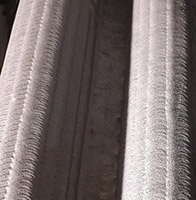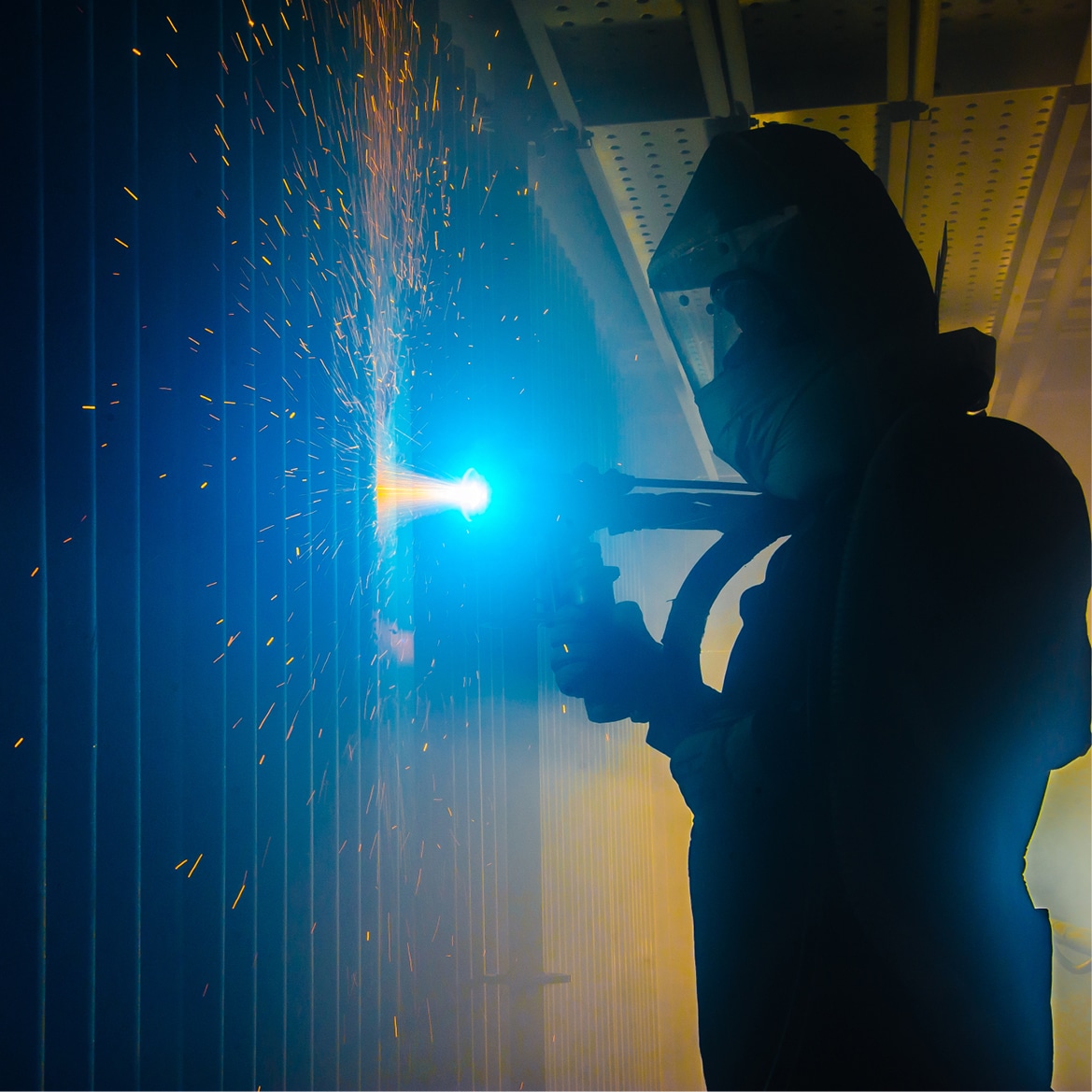Alloy 625 weld overlay of boiler pressure parts, although widespread in Waste to Energy and Biomass-fired boilers, has a limited life depending on the operating conditions of the unit: its aging starts with dealloying, followed by pitting and after some time boiler operators understand that the remaining sponge-like structure can’t protect the tubes and can’t be repaired. Replacing these pressure parts becomes the only choice.
In the steam boiler environment, Alloy 625 weld overlay can degrade quickly depending on the metal skin temperature. Below 400°C deterioration is rather slow: it can take over 10 years to see signs of degradation; above 430°C it degrades much faster: it can reach degradation rates of over 0,5-0,6 mm/year in cases of superheater tubes or high-steam-pressure boilers.
The centers of wide membranes are also the hottest areas on the water walls where degradation initiates more rapidly, especially on the junctions between panels, since the quality of this field operation is typically lower than the shop applied 625 WOL.
The quality of the 625 overlay also impacts the lifetime: the more homogeneous, smooth, and consistent the thickness the better. That is why shop weld overlay performs better than field or on-site welding.
Alloy 625 forms a Chromium oxide layer to resist corrosion but this layer can be eroded or degraded; consequently, another layer forms which consumes the chromium from the 625 alloy layer. Since the concentration of Cr will vary (due to a lack of homogeneity) the consumption can be faster in Cr-depleted areas creating pitting and developing into a “spongy” looking texture on the 625 WOL.
When the operator starts seeing this “spongy’ texture the corrosion rate of the Inconel is going to increase. Iron dilution of the weldment can be a significant reason for this acceleration, therefore, the corrosion rate of a welded alloy is never linear: it is slower at the surface and accelerates with increasing proximity to the base (a combination of Cr consumption and higher Iron (Fe) content when closer to the substrate).
Typically, the first sign of ageing of a welded alloy is the disappearance of the welding ripples on the surface; then, we can start to see small pits on the surface, these pits grow wider and deeper with time.
When measuring the remaining weld overlay layer thickness, the surface should be ground smooth to remove the pitted appearance (to reach the same level as the deepest pit or the minimum thickness) or the measurement will be overestimated (as you will not measure the minimum thickness) leading to later unwanted surprises.
IGS is here to provide information, answer questions and create an effective solution for your needs.
Aged WOL is very difficult to weld overlay again since the porosity on the surface (“spongy texture”) generates gas bubbles in the melted puddle which are encapsulated during cooling, so the layer quality cannot be guaranteed. To overcome this problem, the surface must be ground before welding – which is time-consuming and expensive. The only viable solution available until recently was replacing the panels with new shop weld overlaid ones.
High velocity thermal spray coating has been proven to provide the corrosion resistance needed to protect the ageing 625 WOL.

IGS developed its HVTS 5xxx series specifically for the environments found in WtE and Biomass boilers and on the back of 30+ years of providing protection in power boilers. The system was introduced to the market after intense internal testing and third-party evaluation. In 2017/2018 Uniper [1] ran a 12-month live test in their biomass boiler that showed nearly no signs of metal loss of the IGS HVTS cladding in the environment where welded and other thermal sprayed alloys did not perform.
Large test areas were applied in a major WtE facility in the Netherlands in 2016, Switzerland in 2017 among many others, demonstrating that IGS HVTS cladding can successfully protect weld overlay cladding from degradation and ageing [2].
In addition, the IGS HVTS surface technology solutions can be repaired or reapplied with the same process in case of further need of an extension, creating a manageable preventative maintenance program to maintain the integrity of your boiler water walls and negating the requirement for time-consuming and expensive panel replacement.
The picture shows HVTS IGS 5xxx series cladding applied onto an existing, shop-applied, “spongy” 625 WOL surface after 18 months in operation. Inspection photograph was taken after clean blasting the surface.


Integrated Global Services (IGS) have mitigated corrosion and erosion inside boilers and refinery vessels since the early 1980s. Our specialized certified project teams work around the world.
Stop replacing panels. Call us now for an evaluation and to book our services for your next turnaround.
Literature